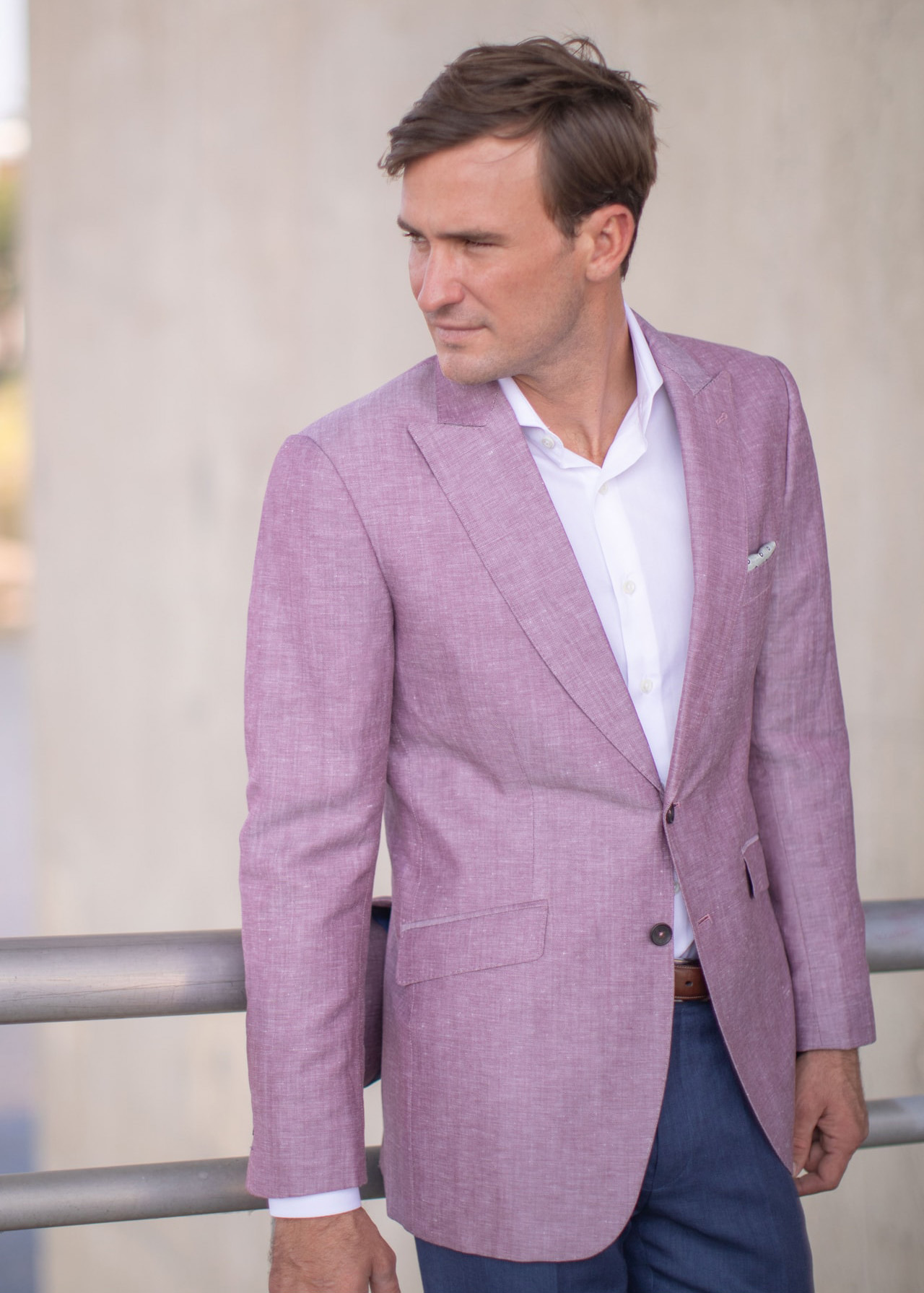I would have chosen a different image altogether; the model appears to have one eye closed as if something is stuck in his eye, and he has bedhead with an Alfalfa (I Photoshopped the hair but can’t easily change his eye). It’s not a great angle partly because it’s creating the illusion that one arm is several inches shorter (though guys with uneven arms would make a great market niche for custom clothes).
The jacket sleeve drape has some sharp bends and wrinkles which should have been steamed at the shoot, or Photoshopped, before it went public. There’s fabric pulling across the waist which I retouched a little, and I smoothed the sleeve line and shoulder line a bit.
Most creative directors, photographers, stylists and retouchers don’t know menswear suiting conventions and don’t know how suits should properly fit or look. The missing shirt cuff is considered an unforgivable sartorial sin among bespoke aficionados, and it’s something I’ve seen before in Alton Lane’s images. Alton Lane is losing prospective customers over minor details like this — details that suiting aficionados obsess over. It’s little shortcomings like this that are separating Alton Lane from the upper tier of great bespoke suit retailers like Kiton and Brioni.
What immediately struck me (and I notice this in many low quality jackets) is that the hopsack jacket has a buttonhole in lieu of a proper lapel hole. Suit aficionados consider this another sartorial sin and will take one look at it and move on to other brands. I could be wrong but it also appears that the buttonhole stitching doesn’t even have a hole, but is only a decorative “shamhole.” If that’s the case then bespoke clientele will consider this blazer on par with, say, H&M or Express, even if the rest of the suit is perfect. There’s no way to sugarcoat it. It might cost Alton Lane a few more dollars to do it right, but I know doing it wrong is costing them the high-end prospective customers who spend $5000+ on a suit. Prospective customers take one look, assess the details that are invisible to the average guy, and move on. It’s nothing personal.
When you consider the best athletes or teams you have to ask what separates the greats from the also-rans. It’s often a fraction of a second, or a single point. It’s the same with luxury menswear. A Kiton/Brioni suit and an Alton Lane suit are (most things being equal) 95% the same if the cloth is the same, with only minor details that separate them. If Alton Lane were to bring the product quality closer in line with the top Italian houses while creating a stronger brand story and showroom environment the company could capture a decent percentage of customers from the top luxury menswear houses.
Alton Lane’s overall merchandising/sales presentation and copy is very weak, and could be far more captivating and seductive:
Why is it called Crawford? It sounds to me like there’s a whole story behind the name that isn’t being told (sold). People like stories surrounding products. In fact, the whole Alton brand should tell a story - but it doesn’t. All it does is discount prices and barrage people with sales.
Most guys have no idea what hopsack is, what it feels or drapes like, or why it’s good for hot weather. The materials and open weave structure are not described in the email presentation. For all most guys know hopsack could be a type of polyester. Even on the linked product page the materials are not listed (I contacted Alton to find out what the materials are, so maybe someone got the memo and listed them by the time you read this). Nowhere does it say that hopsack breathes. Maybe call it Summer tweed? Maybe compare/contrast it to pure linen? Maybe pair it with linen pants and sell its “cool” factor? I would also add something about the lining, if there is any lining. Alton Lane could say this jacket can go unlined or only have the upper lined.
In short, the product description should carry more meat on its bones. We could mention the peak lapels, and what I think is the jacket’s highlight - the stylish canted pockets. Single vent? Side vents? It doesn’t show or tell. I am honestly not sure if the lapels, vents, pockets and buttons are fixed by default, or customizable. If it’s all customizable it should describe what options we are seeing in the photo. In any case there should be a 360 view, too. More information equals more confidence in buying. The copy is very weak in terms of style and information.









